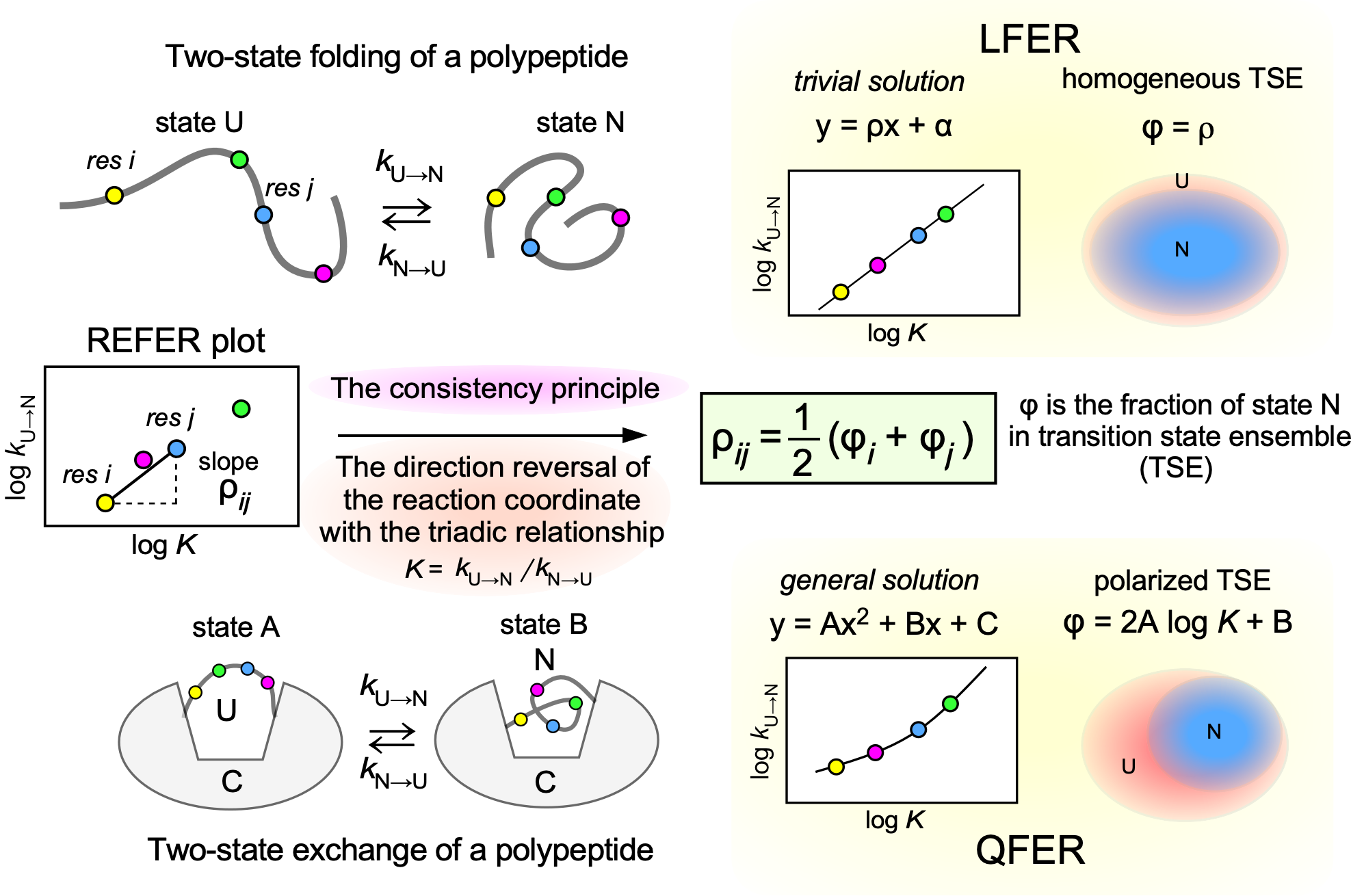1
"Residue-based correlation between equilibrium and rate constants is an experimental formulation of the consistency principle for smooth structural changes of proteins" by Daisuke Kohda, Seiichiro Hayashi, Daisuke Fujinami is published in BPPB as the J-STAGE Advance Publication.
2023 December 13 BPPB
A following article is published as the J-STAGE Advance Publication in "Biophysics and Physicobiology".
Daisuke Kohda, Seiichiro Hayashi, Daisuke Fujinami
"Residue-based correlation between equilibrium and rate constants is an experimental formulation of the consistency principle for smooth structural changes of proteins"
URL:https://doi.org/10.2142/biophysico.bppb-v20.0046
- Abstract
- The consistency principle represents a physicochemical condition requisite for ideal protein folding. It assumes that any pair of amino acid residues in partially folded structures has an attractive short-range interaction only if the two residues are in contact within the native structure. The residue-specific equilibrium constant, K, and the residue-specific rate constant, k (forward and backward), can be determined by NMR and hydrogen-deuterium exchange studies. Linear free energy relationships (LFER) in the rate-equilibrium free energy relationship (REFER) plots (i.e., log k vs. log K) are widely seen in protein-related phenomena, but our REFER plot differs from them in that the data points are derived from one polypeptide chain under a single condition. Here, we examined the theoretical basis of the residue-based LFER. First, we derived a basic equation, ρij = ½(φi + φj), from the consistency principle, where ρij is the slope of the line segment that connects residues i and j in the REFER plot, and φi and φj are the local fractions of the native state in the transient state ensemble (TSE). Next, we showed that the general solution is the alignment of the (log K, log k) data points on a parabolic curve in the REFER plot. Importantly, unlike LFER, the quadratic free energy relationship (QFER) is compatible with the heterogeneous formation of local structures in the TSE. Residue-based LFER/QFER provides a unique insight into the TSE: A foldable polypeptide chain consists of several folding units, which are consistently coupled to undergo smooth structural changes.





